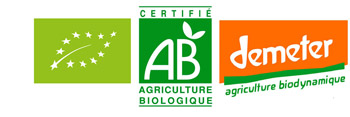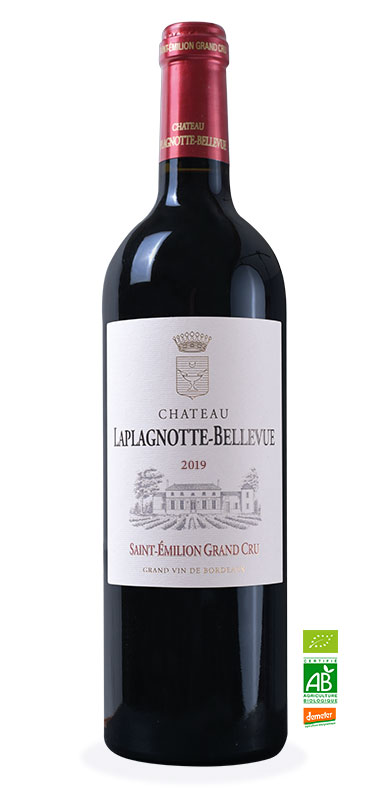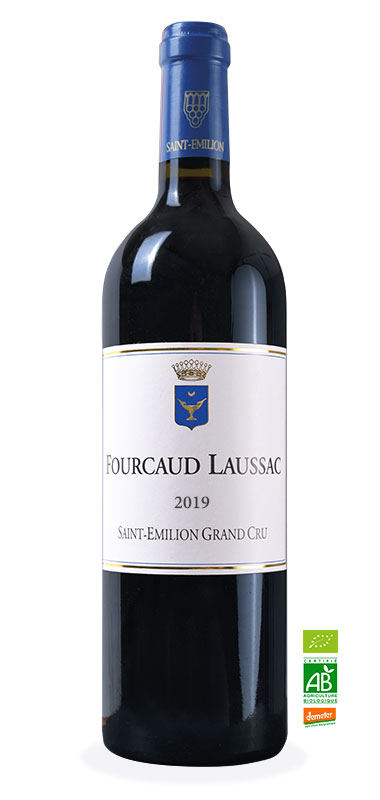Our family have been wine experts for decades. My mother, Claude de Labarre (born Fourcaud Laussac), bought the Château Lapagnotte-Bellevue in 1990 when she was still co-owner and manager of the Château Cheval Blanc.
In 1996, after having studied viticulture and oenology, I came into the estate. Today, my wife and I are in charge of this magnificent property. You will find on this site a full description of our wines. However, don’t hesitate to contact us for more information.

The estate also offers a charming cottage for rent, the Gîte Laplagnotte, located just 50 meters from the Château.
The renovation work on our estate has been completed by my father, Henry de Labarre.
The first mention of the château Laplagnotte Bellevue vineyard appears in the second edition of Cock’s book, which was completely revised by Édouard Féret in 1868.
The vineyard was producing between six to ten barrels at the time, which means that it existed long before this date. In the following decades, the estate got bigger, and in 1954 the parents of the previous owners did one last alteration. The total surface of the vineyard has not changed since then: we have 6.09ha.
The Château Laplagnotte Bellevue has been owned by Henry and Claude de Labarre (née Fourcaud Laussac) since 3rd March 1990, and they have since been passionately devoted to it.
Whether it is in our fields or in our wineries, our working method remains traditional: I am an organic wine producer.
However, we also move with the times and have powerful tools for our vineyards and the winery.
The passion I felt for organic wine increased, and I decided to use the biodynamic method. The 2017 vintage was the first one to be certified by Demeter.
The aging is done in barrels for one year, with 25% new oak barrels.

All notes & comments

All notes & comments
Another complicated year that began with frosts and mildew. The yield was 20 hl/ha. We nevertheless achieved remarkable quality despite the unfavourable weather conditions.
Watch out for mildew at the start of the season! The important phenological stages are progressing very well and the quality of this vintage is very good. Harvesting began on 15 September, which is quite early. 40 hl/ha.
A classic vintage with good weather and a hot summer; I stopped spraying at the end of June, which is exceptional. Yields of 45 hl/ha and a magnificent quality that promises good ageing potential.
Spring frost again! This was followed by very chaotic weather, with heavy mildew pressure. The result was an unbeatable 16 hl/ha.
Just amazing!!
There was a very high risk of disease until the beginning of July. Then we had a very dry summer. Biodynamics worked very well and we finally got a very very good result. The end of the summer was very dry and windy which led us to reach only 35hl/ha. Not that bad... and the wine is very powerful with a high potential for the years to come!
A rather classical year from a meteorological point of view. The growing process went very well and we got high-quality grapes. No storms at the end of the summer. A good vintage with quality and quantity. We were very happy with a very good production. What a relief for the domain!
Exceptional vintage which was unfortunately victim of a late blight.
The yield is only 20 hl / hectare for this delicious nectar.
A very bad start of the season with a frost on April 27!
Indeed, the final yield is only 12 hl / hectare.
The wine is very aromatic and we can begin to drink it in its youth.
A very difficult start to the season with lots of diseases due to humidity.
July and August were exceptionally dry, and quite mild, with little rain in September, which allowed the vines to produce very juicy and tasty grapes. The beautiful Indian Summer allowed us to harvest late (October 4) for optimal maturity. It is an exceptional vintage, both in terms of quality and quantity.
A very beautiful vintage was offered to us by Mother Nature!
The beginning of the season was marked by a fairly high disease pressure, so we were worried. But then, the bloom became very homogeneous thanks to sunny and mild weather. The summer was rather dry and mild with small periods of heat to cheer us up. The vine was not late in its cycle and we started the grape harvest on September 21st and finished it on October 2nd with the Cabernet Franc.
A much better start to the season than in 2013 (it was not difficult).
However, the summer period was not perfect, but rather gloomy. At the end of August, we began to worry. The months of September and October were particularly dry and sunny, which meant we were able to catch up with the maturity of the grapes and dry the vineyards.
We harvested from September 29 for Merlots and October 6 for Cabernets, with a result of 47 hl / ha (maximum yield allowed that year: 50 hl / ha).
A very difficult year.
The cold and chaotic spring gave us a lot of shot berries: not all the flowers were fertilized and we lost a lot of harvest.
The bad weather came back in September and we had to start the harvest on October 5th. The final yield is 23 hl / ha, which is as little as 2009 when we had hail!
2013 is still a surprising vintage, to drink in its youth.
A very wet and rather fresh start to the season meant we were not very optimistic about a good harvest. The weather improved significantly from July 20 with a small heat wave in August and drier weather.
The harvest was very late, we were able to wait for optimal maturity. We collected everything in the week of October 8th and the yield is rather low with 39 hl / ha.
The desired yield is finally here; namely 46 hl / ha.
The harvest began on September 14th and ended on the 21st. It was once again a rather dry weather that conditioned this vintage; the rain happily arrived in July to help the vine in its physiological process.
It was hard to do as well as the 2010 which was an incredible year, but the 2011 vintage remains beautiful.
It is a very remarkable year!
The production was only 38 hl / ha because we had a fairly dry weather all year round. Flowering was very homogeneous. Harvested from 5th to 7th October for the Merlot and 11th and 12th for the Cabernet.
It is a dense, fruity wine with a soft and elegant mouth, but it will be necessary to be patient to fully appreciate this vintage (2016).
33330 St Christophe des Bardes
France
Phone: +33 5 57 24 78 67
Fax: +33 5 57 24 63 62
Mobile: +33 6 15 42 31 88
Email: arnaud@laplagnotte.com
Follow us on Facebook
Saint-Émilion 2 km, Libourne 10 km, Bordeaux 45 km,
Bergerac 45 km
GPS coordinates: 44°54'33.72"N, 0°7'56.11"O
See on Google Maps
This website belongs to:
Château Laplagnotte Bellevue
Bellevue
33330 St Christophe des Bardes - France
Hosted by:
OVH
2 rue Kellerman
59100 Roubaix - France
All use or reproduction of the contents of this website is prohibited without the consent of Château Laplagnotte Bellevue.
Art director : Jean-Michel Le Saux
Photography : Jean-Michel Le Saux - Photography
Webdesign, animation, development : Pascal Antoinet